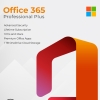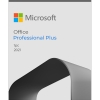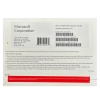Safeguarding Your System: A Complete Guide to Detecting Malware
Introduction
As our reliance on technology grows, so does the threat of malware infiltrating our systems. Malware, short for malicious software, can wreak havoc on your computer, compromise your data, and even steal your personal information. In this comprehensive guide, we’ll delve into the essential methods and tools you need to detect malware in your system, empowering you to keep your digital world safe and secure.
- Understanding Malware Detection: Malware detection is the first line of defense against potential digital threats. Recognizing the importance of early detection and knowing the telltale signs of a malware infection can help you take swift action to mitigate risks.
- Manual Malware Detection: Monitoring your system’s performance, watching for unexpected pop-ups and ads, and reviewing network activity and system modifications are all manual methods to spot anomalies that could indicate a malware infection.
- Antivirus and Anti-Malware Software: Antivirus software is a powerful tool that constantly scans for and removes malware from your system. Regular updates to virus definitions are crucial to staying protected against new threats.
- Conducting System Scans: Running regular system scans, both quick and full, is a fundamental part of malware detection. This helps identify and isolate infected files for further action.
Analyzing Task Manager and System Logs
Task Manager and system logs provide insights into active processes, autostart entries, and unusual events that could point to malware presence.
Employing Malware Removal Tools
Tools like Malwarebytes, Windows Defender, and third-party removal tools provide specialized assistance in finding and eliminating malware.
Online Scanners and Second Opinion Tools
Online scanners and second-opinion tools provide an additional layer of detection, helping you identify threats that your primary antivirus might have missed.
Advanced Techniques for Malware Detection
For more tech-savvy users, advanced techniques like using Process Explorer, Sysinternals Suite, and Wireshark can offer deeper insights into potential malware activity.
Monitoring Browser Extensions and Plugins
Web browsers can also be vulnerable to malware. Regularly reviewing and managing browser extensions and plugins helps ensure your online safety.
Keeping Your System Secure
Maintaining a secure system involves regular software updates, strong passwords, and educating yourself and others about safe online practices.









